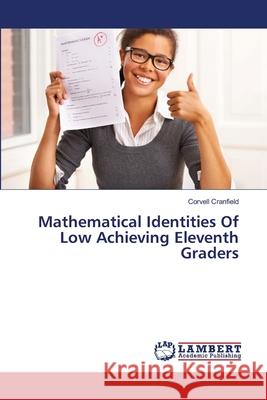Mathematical Identities Of Low Achieving Eleventh Graders » książka
Mathematical Identities Of Low Achieving Eleventh Graders
ISBN-13: 9783659117077 / Angielski / Miękka / 2014 / 312 str.
The construct of mathematical identity has recently been widely used in mathematics education with the intention to understand how students relate to and engage (or disengage) with mathematics. Mathematical identity is defined as the students' knowledge, abilities, skills, beliefs, dispositions, attitudes and emotions, that relates to mathematics and mathematics learning. A key part of this relationship that students have with mathematics is the students' evolving sense of self to understand how mathematics fits with this self. Research shows that students' identity has many facets or multiple identities that are formed throughout their life history; engagement with their peers, family, and teachers; as well as engagement with mathematical tasks. Doing mathematics can be viewed as mathematical activity that involves integrating mathematical thinking by using mathematical facts and knowledge, and requires active student learning. Mathematical tasks used in the classroom form the basis for student's learning and different tasks are used to develop different types of skills and thinking. These tasks often appear in curricular or instructional materials in textbooks.
The construct of mathematical identity has recently been widely used in mathematics education with the intention to understand how students relate to and engage (or disengage) with mathematics. Mathematical identity is defined as the students knowledge, abilities, skills, beliefs, dispositions, attitudes and emotions, that relates to mathematics and mathematics learning. A key part of this relationship that students have with mathematics is the students evolving sense of self to understand how mathematics fits with this self. Research shows that students identity has many facets or multiple identities that are formed throughout their life history; engagement with their peers, family, and teachers; as well as engagement with mathematical tasks. Doing mathematics can be viewed as mathematical activity that involves integrating mathematical thinking by using mathematical facts and knowledge, and requires active student learning. Mathematical tasks used in the classroom form the basis for students learning and different tasks are used to develop different types of skills and thinking. These tasks often appear in curricular or instructional materials in textbooks.











